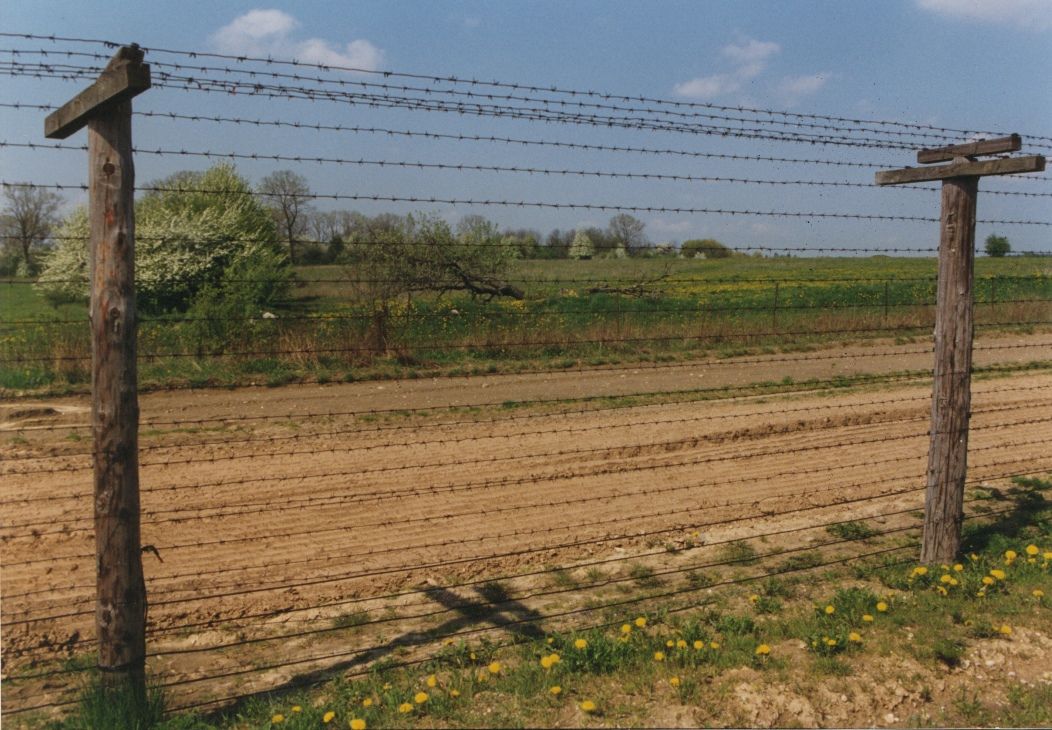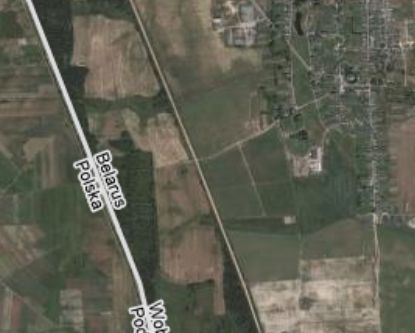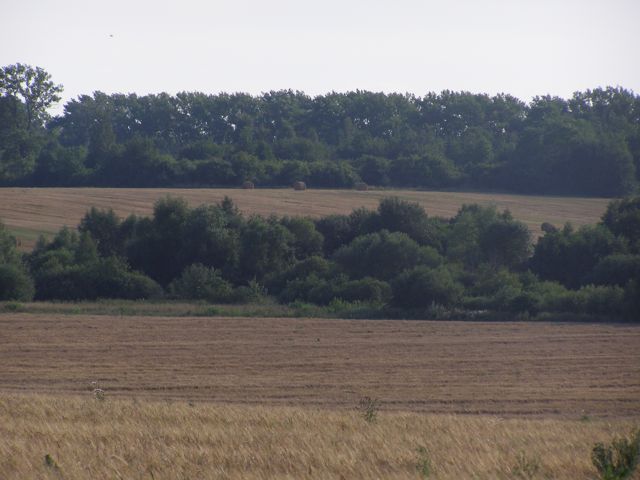Kolonja Izaaka
The Site Today
The Site Today

The Kolonja Izaaka site seen from the Belarus side of the border zone. Photo by Tomasz Wisniewski, 1993
According to Belarus researcher Yuri Dorn, the homes of the Jews of Kolonja Izaaka were vandalized and then burned during the Shoah. The remaining Christians of the colony were moved to Odelsk in 1946 and their homes demolished as the colony's site became the border zone separating Poland and the USSR. Even after the fall of the Soviet Union, the site of Kolonja Izaaka remains the very border of Poland and Belarus, and is only accessible by Belarussian border guards and their dogs. In the satellite photo below, one sees a dark triangle of trees, partially covered by the word "Belarus". This is the former site of Kolonja Izaaka. Running north-south down its center is a slightly darker green stripe. This is presumably the poplar-lined road, mentioned in the Jewish Colonization Association report of 1931 and referred to as the allée by the Kolonja children, according to Sarah Chinsky's essay on life in Kolonja Izaaka.

According
to Yuri Dorn, the Jewish cemetery in Odelsk, which had been
the
burial site for the Jews of Kolonja Izaaka, was destroyed in 1970, and
the land
used to build a day care facility and a recreation center for the town
of 700 people. The burial stones were used for the construction of
those buildings.
In the summer of 2007, Marilyn and Bennett Cohon, two Jewish American travelers with probable ties to Kolonja Izaaka visited Odelsk. Because it is the border zone, they were not permitted to visit the site of the colony. However, the mayor of Odelsk presented them with a jar of local honey, explaining that the bees of Odelsk still fly to the site of Kolonja Izaaka, where the flowering trees planted by the Jewish farmers still flourish. According to Ms. Cohon, the mayor said, "Although we are constrained from being in that area, the bees, thankfully, are not."
In the summer of 2007, Marilyn and Bennett Cohon, two Jewish American travelers with probable ties to Kolonja Izaaka visited Odelsk. Because it is the border zone, they were not permitted to visit the site of the colony. However, the mayor of Odelsk presented them with a jar of local honey, explaining that the bees of Odelsk still fly to the site of Kolonja Izaaka, where the flowering trees planted by the Jewish farmers still flourish. According to Ms. Cohon, the mayor said, "Although we are constrained from being in that area, the bees, thankfully, are not."

The view toward the former Kolonja Izaaka site from Odelsk. Photo courtesy of Marilyn Cohon, 2007.
Copyright © 2008 Irwin Keller
